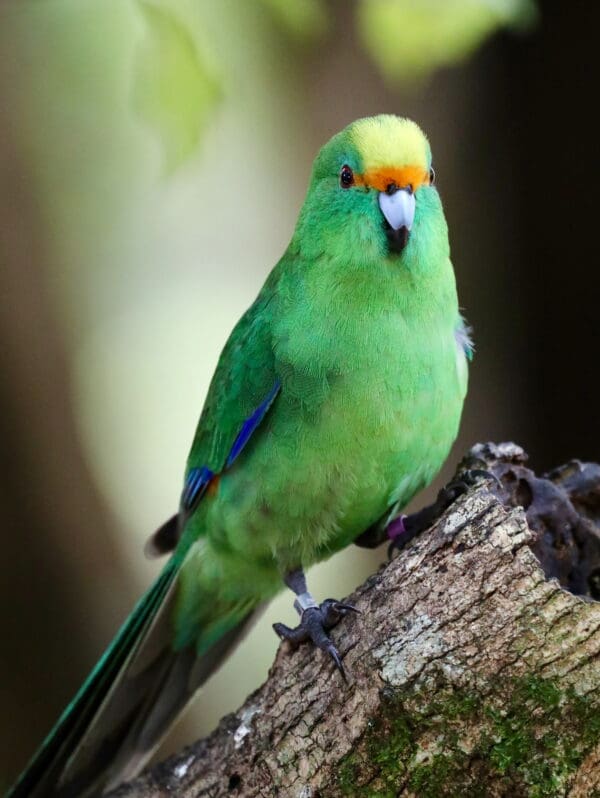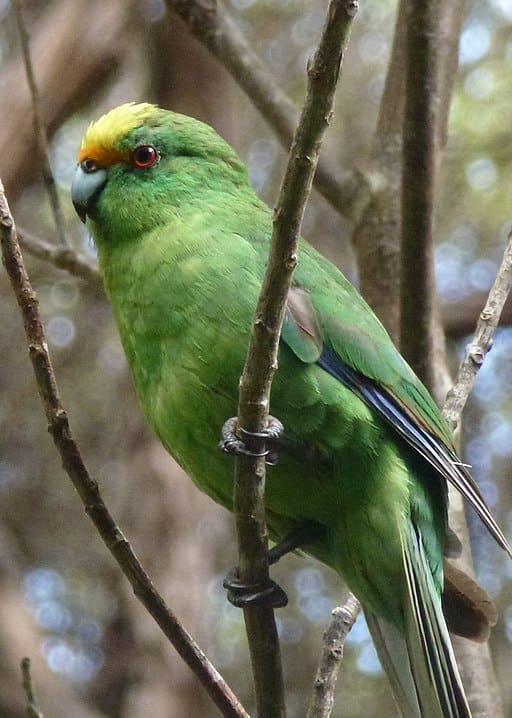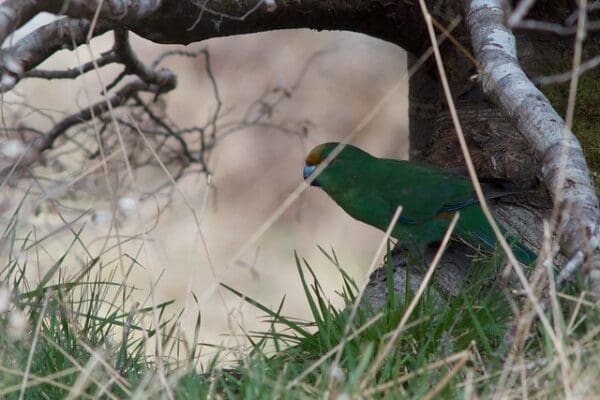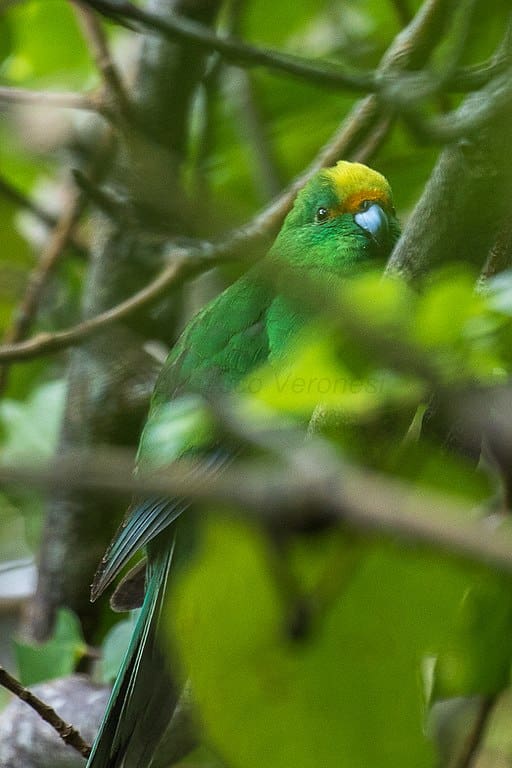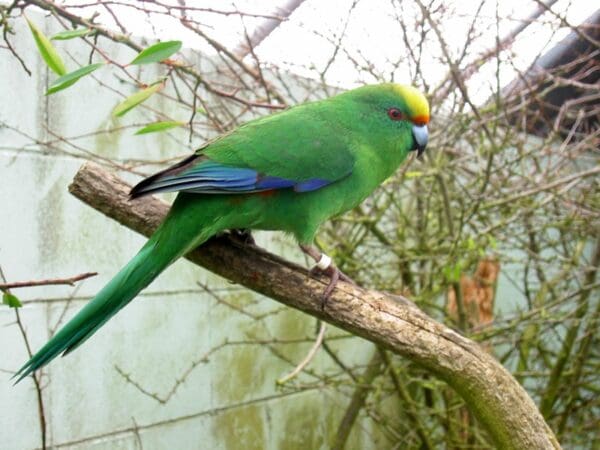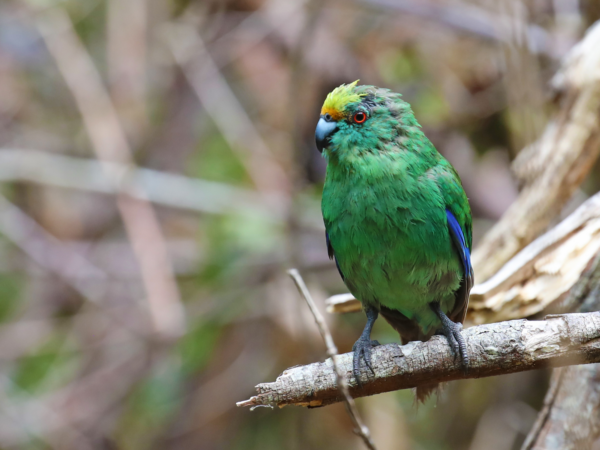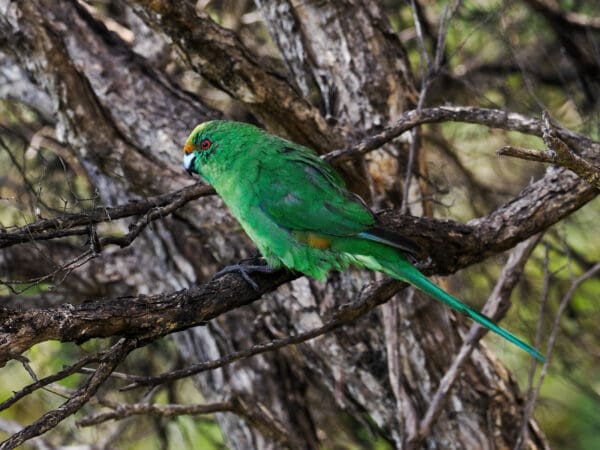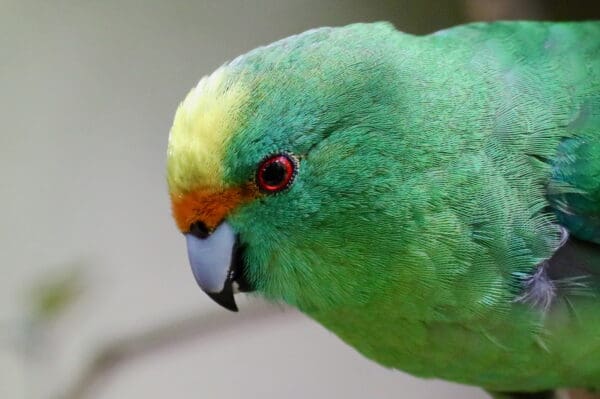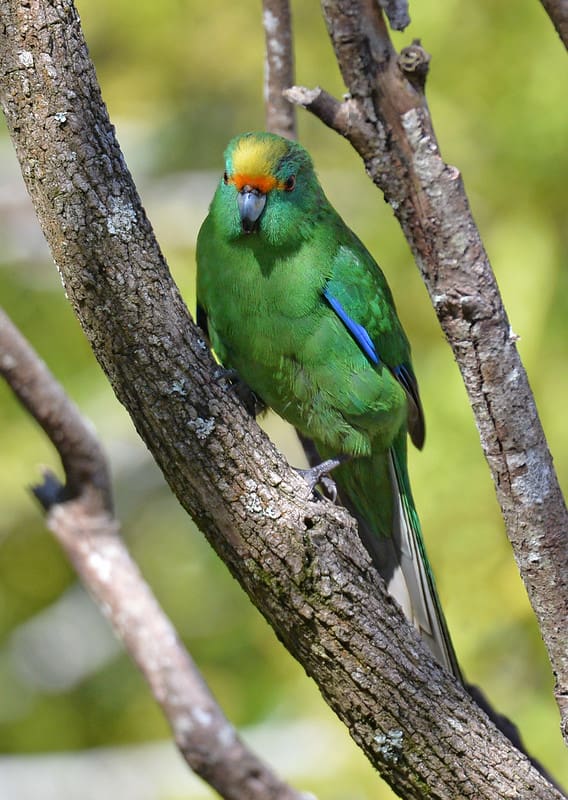Orange-fronted Parakeet
Also known as:
Malherbe's Parakeet, Orange-fronted Kakariki
Also known as:
Malherbe's Parakeet, Orange-fronted Kakariki
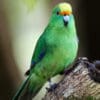
![© Mark Anderson [CC BY-SA 4.0] via Flickr A wild Orange-fronted Parakeet perches on a branch](https://parrots.org/wp-content/uploads/2023/01/wpt_Orange-fronted-Parakeet_1201-5-100x100.jpg)
![© Jon Sullivan [CC BY-SA 2.0] via Flickr A wild Orange-fronted Parakeet hides under a tree](https://parrots.org/wp-content/uploads/2023/01/wpt_Orange-fronted-Parakeet_1201-3-100x100.jpg)
![© Francesco Veronesi [CC BY-SA 2.0] via Wikimedia Commons A wild Orange-fronted Parakeet hides in foliage](https://parrots.org/wp-content/uploads/2023/01/wpt_Orange-fronted-Parakeet_1201-2-100x100.jpg)
![© Jon Sullivan [CC BY 2.0] via Flickr An Orange-fronted Parakeet perches in an enclosure at Isaac Peacock Springs Wildlife Refuge](https://parrots.org/wp-content/uploads/2023/01/wpt_Orange-fronted-Parakeet_1201-1-100x100.jpg)

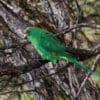
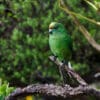
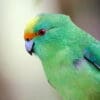
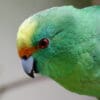
![© Aaron Fellmeth Photography [CC BY-NC-ND 2.0] via Flickr A wild Orange-fronted Parakeet perches on a branch](https://parrots.org/wp-content/uploads/2023/01/wpt_Orange-fronted-Parakeet_1201-4-100x100.jpg)
DID YOU KNOW?
The Orange-fronted or Malherbe’s Parakeet will often flock with Yellow-crowned Parakeets, another Cyanoramphus species.

Cyanoramphus

malherbi
Size:
20 cm (7.8 in)
Weight:
Male: 45-55 g Female: 38-50 g
Subspecies including nominate:
one
Colour Adult:
Both adults: mainly bright green body; orange frontal band from eye to eye; lemon/yellow crown; orange patch on each side of rump; outer webs of flight feathers purple/blue. Beak blue/grey tipped with black, with black cutting edge. Eye red.
Colour Juvenile:
As in adults but with frontal band lighter and more indistinct; lemon yellow crown is less extensive and paler; shorter tail for several weeks after fledging. Beak pale pink colour which gradually darkens. Darker red/brown eyes.
Call:
As in Yellow-fronted Parakeet (Cyanoramphus auriceps). a repetitive note ki-ki-ki-ki, often slightly higher in pitch and more rapid than in Yellow-crowned Parakeet.
More Information:
WPT-supported project – Orange-fronted Parakeet Conservation
Content Sources:
CITES
Avibase
BirdLife International
Cornell Lab of Ornithology/Birds of the World
Parrots: A Guide to Parrots of the World, Juniper and Parr, 1998
Jack van Hal, Canterbury Conservancy, New Zealand Dept. of Conservation, pers. comm.
Parrots: Status Survey and Conservation Plan 2000-2004, Snyder, McGowan, Gilardi and Grajal, 2000.
Parrots of the World, Forshaw and Cooper, 1977. 2010 edition
Vanished and Vanishing Parrots, Forshaw, 2017.
Lexicon of Parrots, Thomas Arndt.
Parrots of the World, Forshaw, 2006.
Parrots: Their Care and Breeding, Low, 1986.
Parrots in Aviculture, Low, 1992.
Captive Status:
Not usually found in captivity. Small captive breeding program established in 2003.
Longevity:
—
Housing:
3.5 x 1 x 2 m (11.5 x 3.3 x 6.5 ft) enclosure.
Diet:
Small seeds such as: canary, millet and smaller amounts of oats, buckwheat and safflower; limited sunflower seed; spray millet; green leaves such as: Swiss chard, lettuce, sowthistle, dandelion, chickweed; seeding grasses if available; rearing food made with: hard-boiled egg, wholemeal bread and carrot, all ground up; fruits such as: apple, pear, banana, pomegranate; mealworms or other insectivore diet; complete pellet or multivitamin.
Enrichment:
—
Nest Box Size:
8″ x 8″ x 14″ (20.3 cm x 20.3 cm x 35.6 cm) vertical box.
Clutch Size:
5-10
Fledging Age:
5-6 weeks
Hatch Weight:
—
Peak Weight:
—
Weaning Weight:
—
World Population:
Fewer than 500 individuals, stable.
IUCN Red List Status:
Critically Endangered
CITES Listing:
Appendix II
Threat Summary:
This species has suffered from rat and stoat invasions and loss of nesting beech trees through harvest and burning. Deer, cattle and possums have degraded low-lying brush. Psittacine beak and feather disease has been found on Little Barrier and Maud Islands in other Cyanoramphus species, as well as antibodies in some Orange-fronted Parakeets.
Range:
New Zealand, formerly throughout North and South Islands, now only on South Island in South Hurunui, Poulter and Hawdon River valleys. Captive bred birds introduced to Chalky Island, Fiordland, and Maud and Blumine Islands. Also introduced in the north to Mayor Island.
Habitat:
Found below 1000 m (3280 ft) in upland beech (Nothofagus) forests on the mainland; occurs in mixed Podocarp and beech areas on the two offshore islands at lower altitude.
Wild Diet:
Eats shoots, buds, berries, flowers, seeds and insects, including caterpillars, aphids and scale insects.
Ecology and Behaviour:
Seen in pairs or small flocks. Will flock with Yellow-crowned Parakeets (Cyanoramphus auriceps). Nests in holes in branch or trunk of mature beech tree. Feeding occurs during daylight hours, along with comfort behaviours.
Clutch and Egg Size:
5-11 broadly elliptical eggs, 22.6 x 18.8 mm (0.9 x 0.7 in).
Breeding Season:
October. Nest is in tree hollow.
